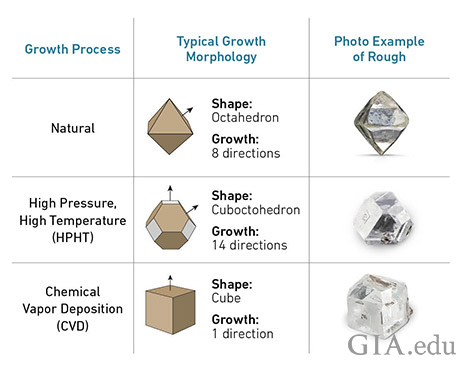The Differences Between Lab and Natural Diamonds
Diamonds may be forever, but not all diamonds are created equal. Whether you're eyeing a sparkling engagement ring or a timeless investment piece, the big question remains: Lab-grown or natural? Let’s cut through the glittering myths and break down what truly sets them apart—so you can choose your style, budget, and values best.
Lab-grown diamonds are created in a laboratory by artificially growing carbon atoms into a diamond crystal. The first step is to create a diamond seed, which acts as a template for the larger diamond. Next, carbon is deposited on the diamond seed and heated to very high temperatures to form a thin layer of diamond. The process continues until the diamond seed has formed many layers of crystallized carbon atoms and is the desired-size diamond. desired size
The main difference between natural and lab-grown diamonds is that natural diamonds are formed over millions of years, while lab-grown diamonds take weeks or months to create. Lab-grown diamonds also tend to be less expensive than natural diamonds. Two main lab-grown diamond production methods exist: the high-pressure/high-temperature process (HPHT) and chemical vapor deposition (CVD). CVD is the more popular method for producing jewelry-quality diamonds, and the HPHT process typically involves diamonds intended for industrial applications.
Another difference between natural and lab-grown diamonds is that natural diamonds are formed over many years, while lab-grown diamonds grow in weeks or months. Lab-grown diamonds also tend to be less expensive than natural diamonds and come in various shapes and sizes.
Lab-grown diamonds are less expensive than natural diamonds. They can be made in different shapes and sizes, whereas natural diamonds are limited to natural conditions. Lab-grown diamonds have a higher clarity grade than natural diamonds. Gemologists can't distinguish between diamonds made in a lab or the earth without specialized equipment.
How to tell the difference between a natural diamond and a lab-grown diamond
Lab-grown and natural diamonds can be difficult to distinguish, but there are a few ways to differentiate between them. One way is to look at the diamond's girdle or the thin band around the edge of the diamond. On a natural diamond, the girdle is usually smoother and more even. On a lab-grown diamond, the girdle may have an inscription indicating lab-grown. Remember that natural diamonds can have their unique GIA Report Registry number micro-laser inscribed onto the girdle, according to GIA. Another way to tell the difference is to look at the diamond under a microscope. Under magnification, natural diamonds will have minor imperfections called inclusions. Lab-grown diamonds will typically have fewer.
Lab-grown diamonds have several advantages over natural diamonds, including being less expensive and available in various shapes and sizes. In addition, lab-grown diamonds are equal in quality, durability, and appearance! While mined diamonds are a traditional choice, that doesn't make them better.

